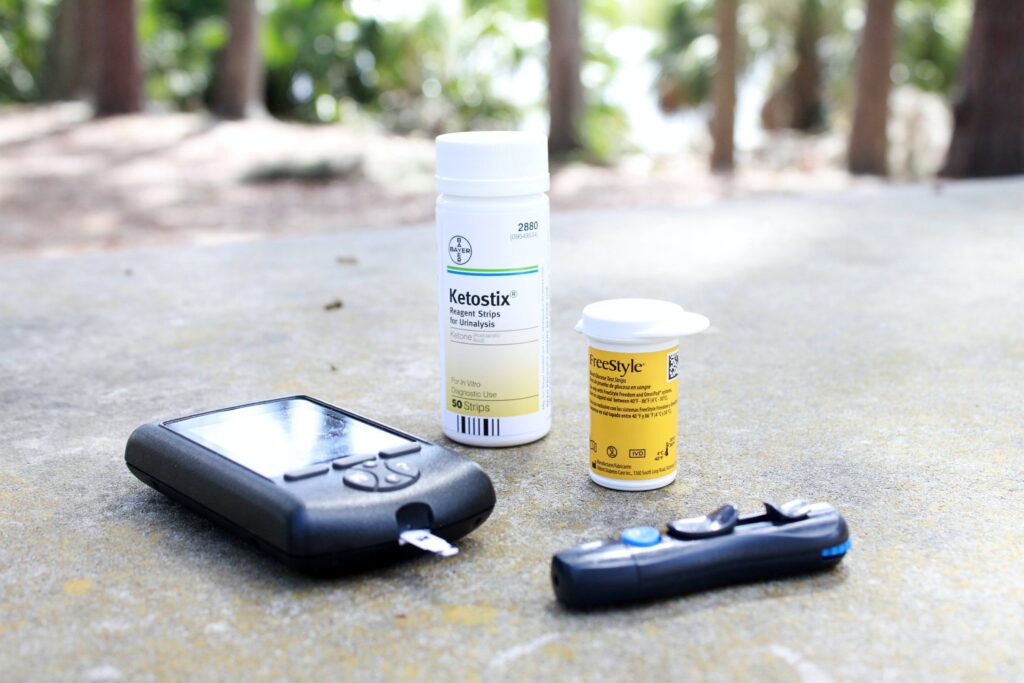Eating disorders do not discriminate as they can affect all types of people, including those with diabetes. However, people with diabetes and eating disorders often go undetected due to cracks in the screening system. At the same time, it is crucial that we recognize the signs of these two diagnoses because they are continuously increasing. One recent study found that there is a 7% increased prevalence of eating disorders in adolescents with type 1 diabetes. To effectively treat these diagnoses, it is essential that we understand both diabetes and eating disorders.
Back up. What is diabetes?
Diabetes mellitus refers to a group of diseases that affect how your body uses blood sugar. Blood sugar, or glucose, is our brain’s preferred source of fuel and is essential for everyday functions. Some symptoms of type 1 and type 2 diabetes include increased thirst, frequent urination, presence of ketones in the urine, and fatigue. In addition to balanced eating, treatment for diabetes often includes monitoring blood sugar levels and insulin therapy. People with diabetes typically take insulin daily (through injections or pumps) to help lower their blood sugar levels. Insulin doses vary and can require a lot of attention and care.
How is diabetes related to eating disorders?
People with eating disorders experience complex and potentially life-threatening illnesses that impact every area of their life. Eating disorders are often characterized by an obsession with numbers on the scale, a dramatic increase or decrease in weight, and an intense preoccupation with weight and body image. These characteristics also apply to people with diabetes who have eating disorders. However, they are more difficult to catch because many of these characteristics apply to people with diabetes without eating disorders as well. For example, individuals with diabetes are often preoccupied with the amount of sugar they ate so that they can correctly dose their insulin. Therefore, we cannot use the same screening tool for people with diabetes.
So how do we screen for eating disorders in people with diabetes?
While individuals with diabetes are constantly monitoring their sugar intake, there are several different warning signs that they may be experiencing an eating disorder:
1. Restricting certain foods or food groups – All food groups are necessary for survival, so intentional food restriction can be a major problem. Furthermore, restricting food groups with a diabetes diagnosis can have life-threatening consequences.
2. Excessive blood glucose monitoring – Every person with diabetes is required to monitor their sugar intake to some extent, but the amounts vary for each individual. However, people with diabetes are not required to obsess over sugar intake, calorie intake, and weight. Excessive obsession can be subjective, but it is important to veer on the side of caution.
3. Intense fear of low blood sugars – Every individual deserves to live a life filled with food freedom and free of fear. However, if fear is constantly guiding a person’s decisions, this may be a sign that help is needed. Some individuals with diabetes and an eating disorder may be afraid of lower blood sugars because they will have to eat sugar to return their blood sugar levels to normal. Some people may even skip their insulin dose in order to keep their blood sugar levels high without eating much sugar.
If you know someone adopting any of these behaviors, they may be in danger of developing an eating disorder. No matter where they are at in their eating disorder, a team of competent health professionals is necessary to address the many entangled issues present with diabetes and eating disorders.
Sources:
“Diabetes.” Mayo Clinic, Mayo Foundation for Medical Education and Research, 30 Oct. 2020,
https://www.mayoclinic.org/diseases-conditions/diabetes/symptoms-causes/syc-20371444.
“Diabulimia.” National Eating Disorders Association, 21 Feb. 2018,
https://www.nationaleatingdisorders.org/diabulimia-5.
Newman, Lauren. “4 Signs and Symptoms of Eating Disorders in People with Diabetes.” 23 Feb.
2021, https://www.laurennewmanrd.com/blog1/2021/2/22/signs-and-symptoms-of-eating-disorders-in-people-with-diabetes.
Winston, Anthony P. “Eating Disorders and Diabetes.” Current diabetes reports vol. 20,8 32. 15
Jun. 2020, doi:10.1007/s11892-020-01320-0



